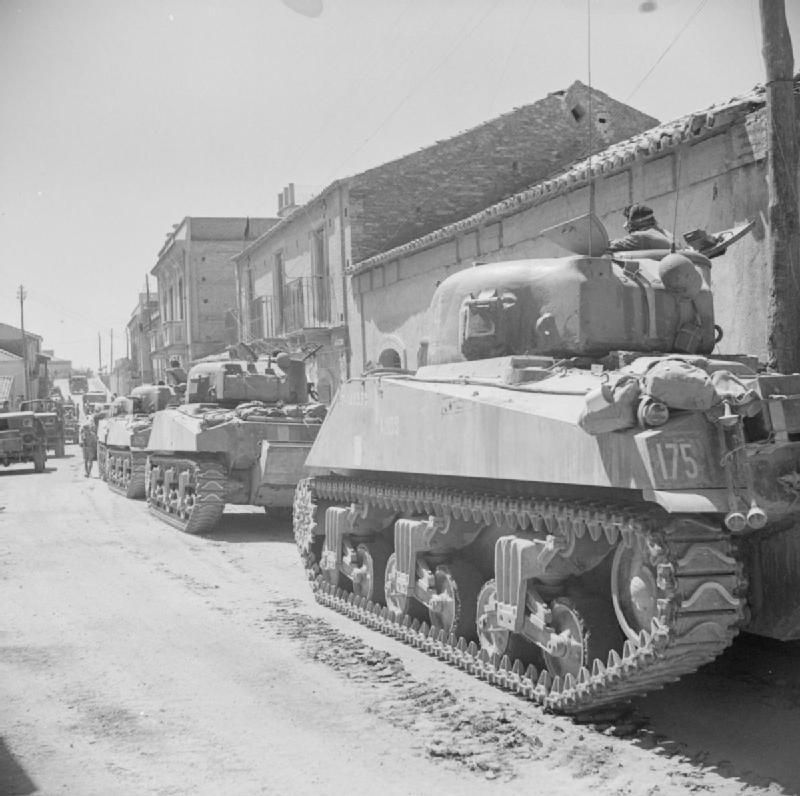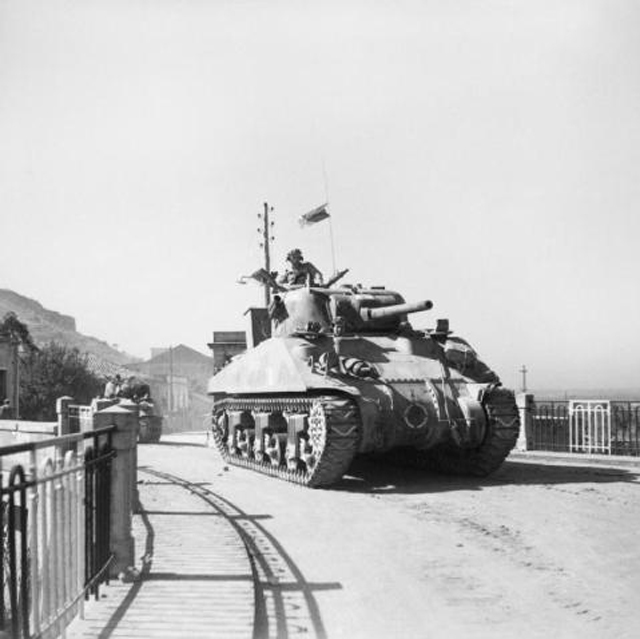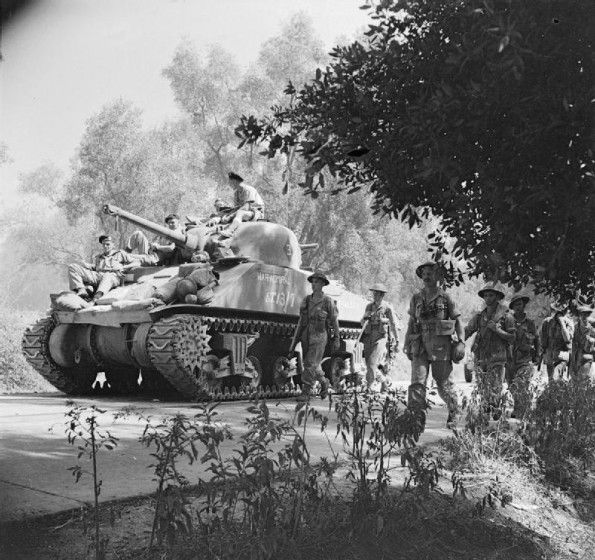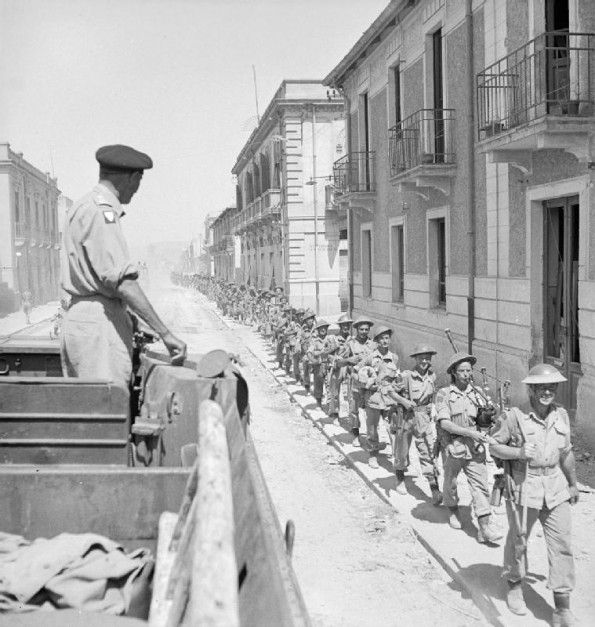Air Operations, Bismarcks
V Bomber Command B-17s and B-24s attack the Cape Gloucester area.
[Air Operations, Central Pacific
3 VF-6 F6Fs down an H8K 'Emily' flying boat north of Howland Island at 1314 hours.
[Air Operations, CBI
FRENCH INDOCHINA- 11 23rd Fighter Group P-40s and 2 449th Fighter Squadron P-38s attack a barracks at Pho Lu.
Air Operations, East Indies
V Bomber Command bombers mount light attacks against targets on Ceram and Timor.
[Air Operations, Europe
RAF BOMBER COMMANDEvening Ops:
- 316 Lancasters and 4 Mosquitos are sent to Berlin.
- Only Lancasters are sent on this raid because of the high casualty rate of Halifaxes and Stirlings on recent Berlin raids. The Mosquitos are used to drop 'spoof' flares well away from the bombers' route in an attempt to attract German night-fighters. The raid approaches Berlin from the northeast but the marking and bombing are mostly short of the target area. That part of the bombing that does reach the city hits the residential areas of Charlottenburg and Moabit and an industrial area called Siemensstadt. Several factories are hit causing major loss of production and hits on major electricity and water works causes disruption of those utilities. One of Berlin's largest breweries are also hit.
- 22 Lancasters are lost.
- 32 OTU Wellingtons, 6 Mosquitos and 6 Halifaxes hit an ammunition dump in the ForÍt de Raismes, near Valenciennes. 44 Stirlings and 12 Halifaxes lay mines off Denmark, in the Frisians and off the Biscay coast. 4 Mosquitos are sent to Düsseldorf and 7 OTU Whitleys make leaflet flights.
- 1 Wellington, 1 Stirling and 1 Whitley are lost.
FRANCE:
- Of 233 1st and 4th Heavy Bomb Wing B-17s dispatched, 216 drop a total of 587 tons of bombs on 5 Luftwaffe airfields in northwestern France between 0843 and 0955 hours.
- 37 of 65 4th Heavy Bomb Wing B-17s dispatched attack the Caudron-Renault aircraft factory and an airdrome, both in Paris, with 111 tons of bombs between 0845 and 0925 hours.
- While escorting the bombers, 56th Fighter Group P-47s down 4 FW-190s near Paris between 0800 and 0900 hours.
- 1 P-47 and its pilot are lost
- 98 of 141 3rd Meadium Bomb Wing B-26s dispatched attack 3 Luftwaffe airfields in northwestern France with a total of 146 tons of bombs between 0828 and 1007 hours.
ITALY:
- NATAF A-20s, A-36s, and fighters, with RAF light bombers, attack gun emplacements throughout the toe of italy, Camigliatello and Crotone Airdromes, rail yards, troop concentrations, bridges, and road junctions.
- 6 IX Bomber Command B-24s are lost
- A 57th Fighter Group P-40 downs a Bf-109 over Catanzaro at 0800 hours.
Air Operations, New Guinea
- V Bomber Command heavy and medium bombers attack Japanese Army ground defenses and gun emplacements aound Lae.
- 9 G4M 'Betty' bombers attack Allied landing craft at Morobe in the morning but score no hits.
Air Operations, Sardinia
12th Air Force P-40s attack radar installations at Capo Carbonara and Pula.
[Air Operations, Solomons
- More than 20 AirSols B-24s, 30 light bombers, and 14 P-40s attack the Kahili airfield on Bougainville.
- 5 B-24s and 5 US Navy bombers attack the Vila airfield on Kolombangara.
- 5 P-40s strafe a dock area at Webster Cove.
Air Operations, Tunisia
81st Fighter Group P-38 down 1 FW-190 and probably 1 more about 50 miles off Bizerte at 0750 hours.
[Diplomatic Relations
At 5:00p.m. Gen Guiseppe Castellano signs the Italian surrender in the big General Staff mess tent at Cassibili in Sicily. The American Gen Bedell Smith signs on behalf of the Allies. Gen Eisenhower is present. The armistice will come into effect on September 8. There are actually 2 surrender documents. The one signed this date is not made public for fear the Germans will move to seize control of Italy and makes no reference to unconditional surrender. No announcement is made until arrangements to forestall a German takeover can be worked out. When the second document is signed 5 days later, it covers capitulation without qualification. It is, however, not the kind of surrender outlined at the Casablanca conference.
[Eastern Front
The Soviets take Putivl to the northeast of Konotop. They have now cut the Bryansk-Konotop railroad. In the south, in the Donets basin, Ilovask is taken.
CENTRAL SECTORThe 60th Army crosses the Desna River at Novgorod Seversky.
SOUTHERN SECTORPutivl falls as the Soviet sever the Bryansk-Konotop railway line and communications between Army Group Center and South.
[
|
|
Germany, Home Front
One million women and children leave Berlin during or soon after the 3 big RAF raids of late August and early September.
[Italy
At 4:30a.m. under air and naval cover and after a 900-gun barrage, units of XIII Corps from Montgomery's 8th Army land on the Calabrian coast to the north of Reggio to begin Operation BAYTOWN. There is almost no resistance. In fact the only German regiment defending the Calabrian coast withdraws northward into the mountains. This attack is actually a diversion, with the object of attracting the German troops south, away from the Salerno area. But Kesselring, commander of the German forces in southern Italy, does not take the bait. By the end of the day Reggio, Catona and San Giovanni are taken by the main forces and Melito and Bagnara by commandos.
|
|
New Guinea
The Allied command decides that, to protect future movements toward Cape Gloucester at the western end of New Britain, it is necessary to secure the line from Dumpu to Saidor, north of Lae. As the air offensive in preparation for the landing at Lae continues, the assault force is already embarked in its transports off Buna.
[Pacific
- The US destroyer Ellet (DD-398) sinks the Japanese submarine I-25, 150 miles northeast of Espiritu Santo.
- The US submarine Pollack (SS-180) sinks the Japanese transport Tagonoura Maru (3521t) off Mikura Jima.
- The US submarine Pompano (SS-181) sinks the Japanese merchant cargo ship Akama Maru (5600t).
Solomons
The Americans occupy more of Arundel Island and consolidate their beachhead in the area of Barakoma on Vella Lavella.
[


